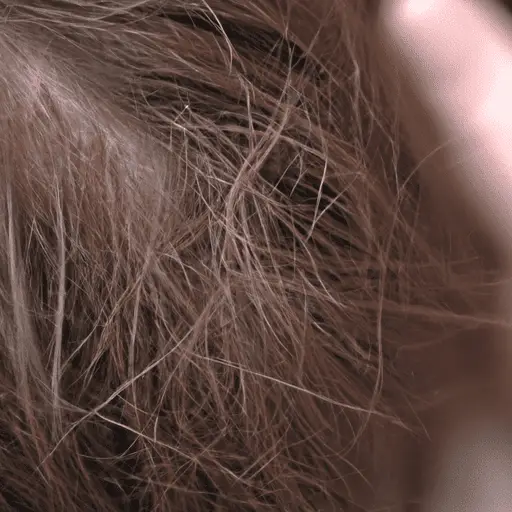Understanding Female Pattern Hair Loss
-
Table of Contents
- Understanding Female Pattern Hair Loss
- Key Takeaways
- Unraveling the Mystery of Female Pattern Hair Loss
- The Underlying Causes of FPHL
- Recognizing and Diagnosing FPHL
- Treating and Managing FPHL
- FAQ Section
- 1. What is female pattern hair loss?
- 2. What causes FPHL?
- 3. How is FPHL diagnosed?
- 4. Can FPHL be cured?
- 5. What can I do if I suspect I have FPHL?
- Conclusion: Empowering Women Through Knowledge
- Key Takeaways
Understanding Female Pattern Hair Loss

[youtubomatic_search]
Key Takeaways
- Female pattern hair loss (FPHL) is a common condition affecting millions of women worldwide.
- It is characterized by a progressive thinning of the hair, primarily on the top and front of the scalp.
- Several factors contribute to FPHL, including genetics, hormonal changes, and aging.
- While there is no cure for FPHL, treatments are available that can slow the progression of hair loss and improve hair density.
- Early detection and intervention are crucial for managing FPHL effectively.
Unraveling the Mystery of Female Pattern Hair Loss
Female pattern hair loss (FPHL), also known as androgenetic alopecia, is a common condition that affects millions of women worldwide. It is characterized by a progressive thinning of the hair, primarily on the top and front of the scalp. Unlike male pattern baldness, which typically results in a receding hairline or bald spots, FPHL often leads to a general thinning of hair without complete baldness.
Despite its prevalence, FPHL remains a poorly understood condition. Many women suffer in silence, often due to embarrassment or a lack of awareness about the condition. This article aims to shed light on FPHL, its causes, symptoms, and available treatments, to empower women with the knowledge they need to seek help and manage their condition effectively.
The Underlying Causes of FPHL
Several factors contribute to FPHL. Genetics play a significant role, with women who have a family history of the condition being more likely to develop it. Hormonal changes, particularly those associated with menopause, can also trigger FPHL. Additionally, aging is a key factor, with the condition becoming more common as women get older.
Despite these known factors, the exact mechanism behind FPHL remains unclear. Research suggests that it may involve an increased sensitivity of hair follicles to androgens, the male hormones that are present in both men and women. This sensitivity leads to a shortening of the hair growth cycle and a gradual thinning of the hair.
Recognizing and Diagnosing FPHL
FPHL typically begins with a gradual thinning of the hair on the top and front of the scalp. Over time, this thinning can become more noticeable, with the scalp becoming visible through the hair. Unlike male pattern baldness, FPHL does not usually result in complete baldness.
Diagnosing FPHL can be challenging, as it requires ruling out other causes of hair loss. A dermatologist or trichologist can perform a scalp examination and may take a hair sample for analysis. In some cases, blood tests may be necessary to rule out underlying medical conditions that can cause hair loss.
Treating and Managing FPHL
While there is no cure for FPHL, treatments are available that can slow the progression of hair loss and improve hair density. These include topical treatments such as minoxidil, oral medications like spironolactone and finasteride, and procedures such as hair transplantation or scalp micropigmentation.
Early detection and intervention are crucial for managing FPHL effectively. Women who notice signs of hair thinning should seek medical advice as soon as possible. With the right treatment and care, it is possible to manage FPHL and maintain a healthy, full head of hair.
FAQ Section
1. What is female pattern hair loss?
Female pattern hair loss (FPHL) is a common condition characterized by a progressive thinning of the hair, primarily on the top and front of the scalp.
2. What causes FPHL?
FPHL is caused by a combination of genetic, hormonal, and age-related factors. The exact mechanism behind the condition is not fully understood but may involve an increased sensitivity of hair follicles to androgens.
3. How is FPHL diagnosed?
FPHL is diagnosed through a scalp examination and may involve a hair sample analysis or blood tests to rule out other causes of hair loss.
4. Can FPHL be cured?
While there is no cure for FPHL, treatments are available that can slow the progression of hair loss and improve hair density.
5. What can I do if I suspect I have FPHL?
If you suspect you have FPHL, seek medical advice as soon as possible. Early detection and intervention are crucial for managing the condition effectively.
Conclusion: Empowering Women Through Knowledge
Female pattern hair loss is a common yet poorly understood condition that affects millions of women worldwide. By understanding the causes, symptoms, and treatments of FPHL, women can take control of their hair health and seek the help they need to manage their condition effectively.
Remember, early detection and intervention are key. If you notice signs of hair thinning, don’t hesitate to seek medical advice. With the right treatment and care, it is possible to slow the progression of FPHL and maintain a healthy, full head of hair.
Key Takeaways
- Female pattern hair loss is a common condition characterized by a progressive thinning of the hair.
- Genetics, hormonal changes, and aging are key factors contributing to FPHL.
- Early detection and intervention are crucial for managing FPHL effectively.
- While there is no cure for FPHL, treatments are available that can slow hair loss and improve hair density.
- Women who suspect they have FPHL should seek medical advice as soon as possible.
[youtubomatic_search]


